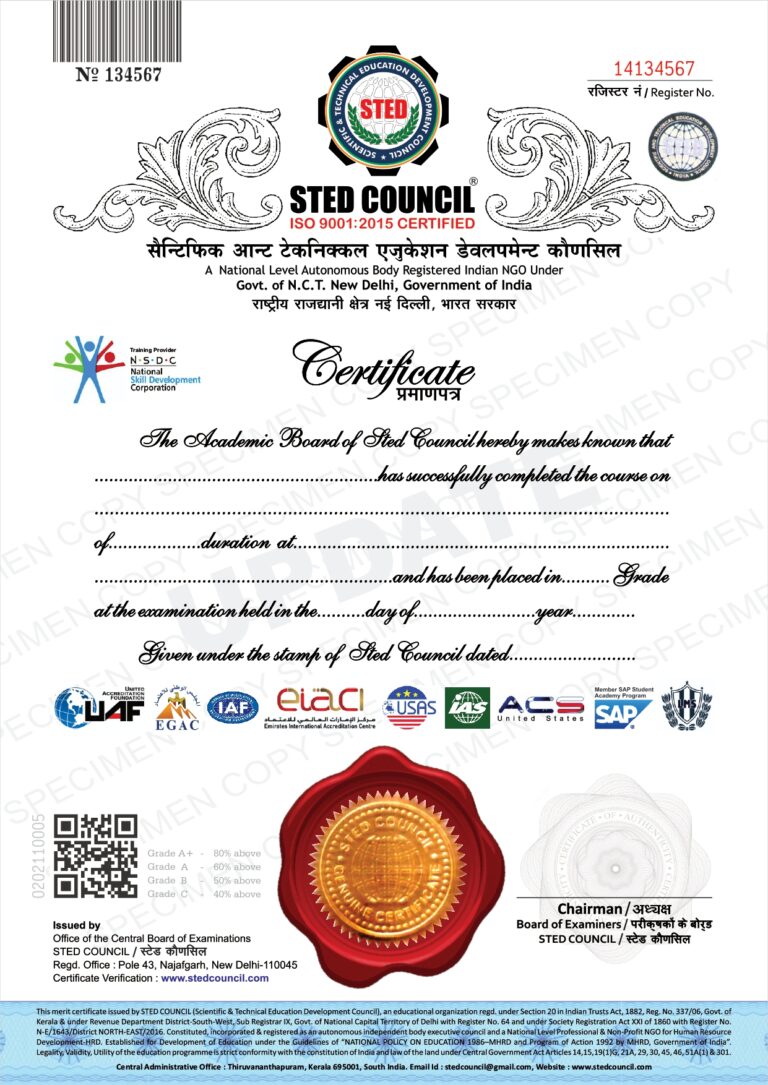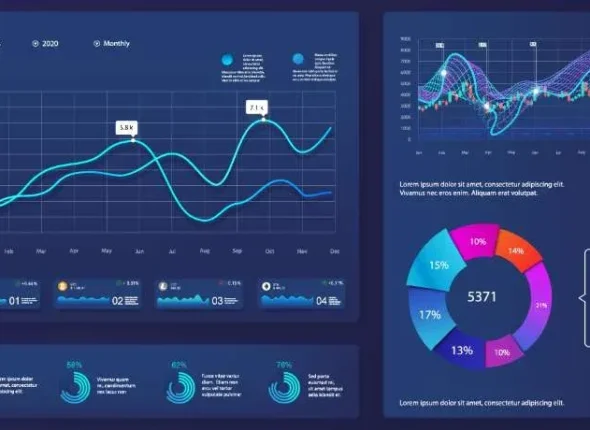
BI Fundamentals
Curriculum
-
Oracle SQL Fundamentals
-
Oracle – SQL
-
Oracle SQL – Home
-
Oracle – SQL – Introduction
-
Oracle – SQL – Environment Setup
-
Oracle – SQL – Getting Started
-
Oracle – SQL – DDL Statements
-
Oracle – SQL – Create Table
-
Oracle – SQL – Alter Table
-
Oracle – SQL – Drop Table
-
Oracle – SQL – Truncate Table
-
Oracle – SQL – Constraints
-
Oracle – SQL – Not Null Constraint
-
Oracle – SQL – Unique Constraint
-
Oracle – SQL – Primary Key Constraint
-
Oracle – SQL – Check Constraint
-
Oracle – SQL – Foreign Key Constraint
-
Oracle – SQL – Managing Constraints
-
Oracle – SQL – Data Manipulation Language
-
Oracle – SQL – Insert Statement
-
Oracle – SQL – Update Statement
-
Oracle – SQL – Delete Statement
-
Oracle – SQL – Select Statement
-
Oracle – SQL – Sorting Data
-
Oracle – SQL – Filtering Data
-
Oracle – SQL – Functions
-
Oracle – SQL – General Functions
-
Oracle – SQL – Joins
-
Oracle – SQL – Group Functions
-
Oracle – SQL – Group By Clause
-
Oracle – SQL – Creating Users
-
Business Intelligence Basics / Data warehouse Fundamentals
-
Microsoft Power BI Desktop Visualisation
-
Basics of Data warehouse Concepts / BI Concepts (Data Model types , Facts and Dimensions)
-
Overview of Power BI Tools.
-
Introduction to Tools and Terminology.
-
Connecting to Microsoft Excel , Web Data , Overview of Power Query Editor , Data Model.
-
Gives you an overview of the interface and gets you started in creating
-
your first Power BI Report
-
gets you started with the Power Query Editor (cleaning up messy data)
-
create your custom datestable using MCode Method.
-
you learn advanced Power Query Transformation Steps
-
Using Themes and Import Custom Themes from Gallery.
-
How to set up your data model – Setup and Manage relationships.
-
Using Edit Interactions.
-
Creating Calculated Columns.
-
Starting with Measures and Quick Measures.
-
DAX: SUMX function
-
Create a measures table to keep all the custom measures at single Place.
-
DAX: SUMX with RELATED
-
DAX Timeintelligence: CALCULATE, SAMEPERIODLASTYEAR, FILTER,
-
ALLSELECTED, MAX
-
Build your Report, use custom visuals
-
DAX Timeintelligence: CALCULATE, SAMEPERIODLASTYEAR, DATEADD
-
RANKX, ALL, GENERATESERIES, IF with Parameter
-
DAX Timeintelligence: CALCULATE, FILTER, ALLSELECTED, MAX (=> cumulative Sales)
-
Visualizing DAX Calculations.
-
Hierarchies and Groups Concepts.
-
Using Various types of graphs and Slicers to filter the data.
-
Using Filters – Page and Report Level.
-
Using Tool Tips at Page Level and Field Level
-
Conditional Formatting in Tables and Graphs.
-
Using Buttons and Actions.
-
Creating Bookmarks with Various actions.
-
Using Ask a Questions to create Custom visuals.
-
Using Market Place to add Custom visuals to Visualisations (Aster , Radar , Sankey and Chord Plots demo)
-
Use Scrollers and Hierarchy Slicers from Market Place.
-
Sample Reports using Database Tables – Demo to connect any database.
-
Publish reports to Power BI Service.
-
Creating Dashboards and Insights.
-
Interacting with your Dashboards
-
Sharing Dashboards and Reports.
-
Additional Topics: (with DAX)
-
Advanced Topics: (With DAX)
-
Tableau Data Visualisation
-
Introduction and Overview
-
BI and Data warehouse Overview
-
Why Tableau? Why Visualization?
-
Getting Started – creating some powerful visualizations quickly
-
The Tableau Product Line
-
Things you should know about Tableau
-
Getting Started
-
Connecting to Data and introduction to data source concept
-
Working with data files versus database server
-
Understanding the Tableau workspace
-
Dimensions and Measures
-
Using Show Me!
-
Tour of Shelves (How shelves and marks work)
-
Building Basic Views
-
Help Menu and Samples
-
Saving and sharing your work
-
Creating Views
-
Marks
-
Size and Transparency
-
Highlighting
-
Working with Dates
-
Date aggregations and date parts
-
Discrete versus Continuous
-
Dual Axis / Multiple Measures
-
Combo Charts with different mark types
-
Geographic Map Page Trails
-
Heat Map
-
Density Chart
-
Scatter Plots
-
Pie Charts and Bar Charts
-
Small Multiples
-
Working with aggregate versus disaggregate data
-
Analyzing
-
Sorting & Grouping
-
Aliases
-
Filtering and Quick Filters
-
Cross-Tabs (Pivot Tables)
-
Totals and Subtotals Drilling and Drill Through
-
Aggregation and Disaggregation
-
Percent of Total
-
Working with Statistics and Trend lines
-
Getting Started with Calculated Fields
-
Working with String Functions
-
Basic Arithmetic Calculations
-
Date Math
-
Working with Totals
-
Custom Aggregations
-
Logic Statements
-
Formatting
-
Options in Formatting your Visualization
-
Working with Labels and Annotations
-
Effective Use of Titles and Captions
-
Introduction to Visual Best Practices
-
Building Interactive Dashboard
-
Combining multiple visualizations into a dashboard
-
Making your worksheet interactive by using actions and filters
-
An Introduction to Best Practices in Visualization
-
Sharing Workbooks
-
Packaged Workbooks
-
Publish to Tableau Server and Sharing over the Web
-
Putting it all together
-
Scenario-based Review Exercises
-
Best Practices
-
Oracle Business Intelligence 12c
-
Repository Basics
-
Building the Physical Layer of a Repository
-
Building the Business Model and Mapping Layer of a Repository
-
Building the Presentation Layer of a Repository
-
Testing and Validating a Repository
-
Managing Logical Table Sources
-
Adding Calculations to a Fact
-
Working with Logical Dimensions
-
Using Aggregates
-
Using Partitions and Fragments
-
Using Repository Variables
-
Modeling Time Series Data
-
Security
-
Creating Oracle Business Intelligence Dashboards
-
Configuring Oracle Business Intelligence Dashboards
-
Creating Dashboard Prompts and Variables
-
Using Oracle Business Intelligence Delivers
-
Oracle Data Integrator 12c
-
Oracle SQL Fundamentals
- Oracle – SQL
- Oracle SQL – Home
- Oracle – SQL – Introduction
- Oracle – SQL – Environment Setup
- Oracle – SQL – Getting Started
- Oracle – SQL – DDL Statements
- Oracle – SQL – Create Table
- Oracle – SQL – Alter Table
- Oracle – SQL – Drop Table
- Oracle – SQL – Truncate Table
- Oracle – SQL – Constraints
- Oracle – SQL – Not Null Constraint
- Oracle – SQL – Unique Constraint
- Oracle – SQL – Primary Key Constraint
- Oracle – SQL – Check Constraint
- Oracle – SQL – Foreign Key Constraint
- Oracle – SQL – Managing Constraints
- Oracle – SQL – Data Manipulation Language
- Oracle – SQL – Insert Statement
- Oracle – SQL – Update Statement
- Oracle – SQL – Delete Statement
- Oracle – SQL – Select Statement
- Oracle – SQL – Sorting Data
- Oracle – SQL – Filtering Data
- Oracle – SQL – Functions
- Oracle – SQL – General Functions
- Oracle – SQL – Joins
- Oracle – SQL – Group Functions
- Oracle – SQL – Group By Clause
- Oracle – SQL – Creating Users
-
Business Intelligence Basics / Data warehouse Fundamentals
-
Microsoft Power BI Desktop Visualisation
- Basics of Data warehouse Concepts / BI Concepts (Data Model types , Facts and Dimensions)
- Overview of Power BI Tools.
- Introduction to Tools and Terminology.
- Connecting to Microsoft Excel , Web Data , Overview of Power Query Editor , Data Model.
- Gives you an overview of the interface and gets you started in creating
- your first Power BI Report
- gets you started with the Power Query Editor (cleaning up messy data)
- create your custom datestable using MCode Method.
- you learn advanced Power Query Transformation Steps
- Using Themes and Import Custom Themes from Gallery.
- How to set up your data model – Setup and Manage relationships.
- Using Edit Interactions.
- Creating Calculated Columns.
- Starting with Measures and Quick Measures.
- DAX: SUMX function
- Create a measures table to keep all the custom measures at single Place.
- DAX: SUMX with RELATED
- DAX Timeintelligence: CALCULATE, SAMEPERIODLASTYEAR, FILTER,
- ALLSELECTED, MAX
- Build your Report, use custom visuals
- DAX Timeintelligence: CALCULATE, SAMEPERIODLASTYEAR, DATEADD
- RANKX, ALL, GENERATESERIES, IF with Parameter
- DAX Timeintelligence: CALCULATE, FILTER, ALLSELECTED, MAX (=> cumulative Sales)
- Visualizing DAX Calculations.
- Hierarchies and Groups Concepts.
- Using Various types of graphs and Slicers to filter the data.
- Using Filters – Page and Report Level.
- Using Tool Tips at Page Level and Field Level
- Conditional Formatting in Tables and Graphs.
- Using Buttons and Actions.
- Creating Bookmarks with Various actions.
- Using Ask a Questions to create Custom visuals.
- Using Market Place to add Custom visuals to Visualisations (Aster , Radar , Sankey and Chord Plots demo)
- Use Scrollers and Hierarchy Slicers from Market Place.
- Sample Reports using Database Tables – Demo to connect any database.
- Publish reports to Power BI Service.
- Creating Dashboards and Insights.
- Interacting with your Dashboards
- Sharing Dashboards and Reports.
-
Additional Topics: (with DAX)
-
Advanced Topics: (With DAX)
-
Tableau Data Visualisation
- Introduction and Overview
- BI and Data warehouse Overview
- Why Tableau? Why Visualization?
- Getting Started – creating some powerful visualizations quickly
- The Tableau Product Line
- Things you should know about Tableau
- Getting Started
- Connecting to Data and introduction to data source concept
- Working with data files versus database server
- Understanding the Tableau workspace
- Dimensions and Measures
- Using Show Me!
- Tour of Shelves (How shelves and marks work)
- Building Basic Views
- Help Menu and Samples
- Saving and sharing your work
- Creating Views
- Marks
- Size and Transparency
- Highlighting
- Working with Dates
- Date aggregations and date parts
- Discrete versus Continuous
- Dual Axis / Multiple Measures
- Combo Charts with different mark types
- Geographic Map Page Trails
- Heat Map
- Density Chart
- Scatter Plots
- Pie Charts and Bar Charts
- Small Multiples
- Working with aggregate versus disaggregate data
- Analyzing
- Sorting & Grouping
- Aliases
- Filtering and Quick Filters
- Cross-Tabs (Pivot Tables)
- Totals and Subtotals Drilling and Drill Through
- Aggregation and Disaggregation
- Percent of Total
- Working with Statistics and Trend lines
- Getting Started with Calculated Fields
- Working with String Functions
- Basic Arithmetic Calculations
- Date Math
- Working with Totals
- Custom Aggregations
- Logic Statements
- Formatting
- Options in Formatting your Visualization
- Working with Labels and Annotations
- Effective Use of Titles and Captions
- Introduction to Visual Best Practices
- Building Interactive Dashboard
- Combining multiple visualizations into a dashboard
- Making your worksheet interactive by using actions and filters
- An Introduction to Best Practices in Visualization
- Sharing Workbooks
- Packaged Workbooks
- Publish to Tableau Server and Sharing over the Web
- Putting it all together
- Scenario-based Review Exercises
- Best Practices
-
Oracle Business Intelligence 12c
- Repository Basics
- Building the Physical Layer of a Repository
- Building the Business Model and Mapping Layer of a Repository
- Building the Presentation Layer of a Repository
- Testing and Validating a Repository
- Managing Logical Table Sources
- Adding Calculations to a Fact
- Working with Logical Dimensions
- Using Aggregates
- Using Partitions and Fragments
- Using Repository Variables
- Modeling Time Series Data
- Security
- Creating Oracle Business Intelligence Dashboards
- Configuring Oracle Business Intelligence Dashboards
- Creating Dashboard Prompts and Variables
- Using Oracle Business Intelligence Delivers
-
Oracle Data Integrator 12c











